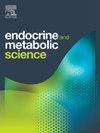Harnessing nanoscale innovations for enhanced healing of diabetic foot ulcers
Q3 Medicine
引用次数: 0
Abstract
In this article, we explore the transformative potential of nanomaterials in managing diabetic foot ulcers (DFUs), a significant complication affecting millions of individuals globally. These chronic wounds pose substantial challenges in diabetes care, often leading to severe infections and amputations. We emphasize that traditional treatment modalities are insufficient, thereby necessitating innovative approaches. Nanomaterials, characterized by unique physicochemical properties at the nanoscale, enhance biological interactions, facilitating accelerated healing, and targeted drug delivery. We discuss various applications of nanomaterials, from their intrinsic antimicrobial capabilities—exemplified by silver nanoparticles—to their role in promoting cell proliferation and migration critical for effective tissue repair. Furthermore, we highlight their capacity for controlled drug release and improved oxygen supply, both vital for optimal wound healing. This comprehensive review delineates the steps required for integrating nanomaterials into clinical practice, stressing the importance of thorough research, formulation, regulatory approval, and personalized treatment strategies. By leveraging these advanced materials, we assert that significant advancements in DFU management can be achieved, improving patient outcomes and quality of life. Our findings underscore the necessity for ongoing research aimed at optimizing the application of nanomaterials in wound care, thereby paving the way for innovative, evidence-based practices that address the complex challenges inherent in diabetic foot ulcer treatment.

利用纳米级创新来增强糖尿病足溃疡的愈合
在这篇文章中,我们探讨了纳米材料在治疗糖尿病足溃疡(DFUs)方面的变革潜力,这是一种影响全球数百万人的重大并发症。这些慢性伤口给糖尿病护理带来了巨大挑战,往往导致严重感染和截肢。我们强调,传统的治疗方式是不够的,因此需要创新的方法。纳米材料在纳米尺度上具有独特的物理化学性质,可以增强生物相互作用,促进加速愈合和靶向药物递送。我们讨论了纳米材料的各种应用,从它们固有的抗菌能力(例如银纳米颗粒)到它们在促进细胞增殖和迁移方面的作用,这对有效的组织修复至关重要。此外,我们强调其控制药物释放和改善氧气供应的能力,这对最佳伤口愈合至关重要。这篇全面的综述描述了将纳米材料整合到临床实践所需的步骤,强调了彻底研究、配方、监管批准和个性化治疗策略的重要性。通过利用这些先进的材料,我们断言可以实现DFU管理的重大进步,改善患者的预后和生活质量。我们的研究结果强调了正在进行的研究的必要性,旨在优化纳米材料在伤口护理中的应用,从而为解决糖尿病足溃疡治疗中固有的复杂挑战的创新、循证实践铺平道路。
本文章由计算机程序翻译,如有差异,请以英文原文为准。
求助全文
约1分钟内获得全文
求助全文
来源期刊

Endocrine and Metabolic Science
Medicine-Endocrinology, Diabetes and Metabolism
CiteScore
2.80
自引率
0.00%
发文量
4
审稿时长
84 days
 求助内容:
求助内容: 应助结果提醒方式:
应助结果提醒方式:


